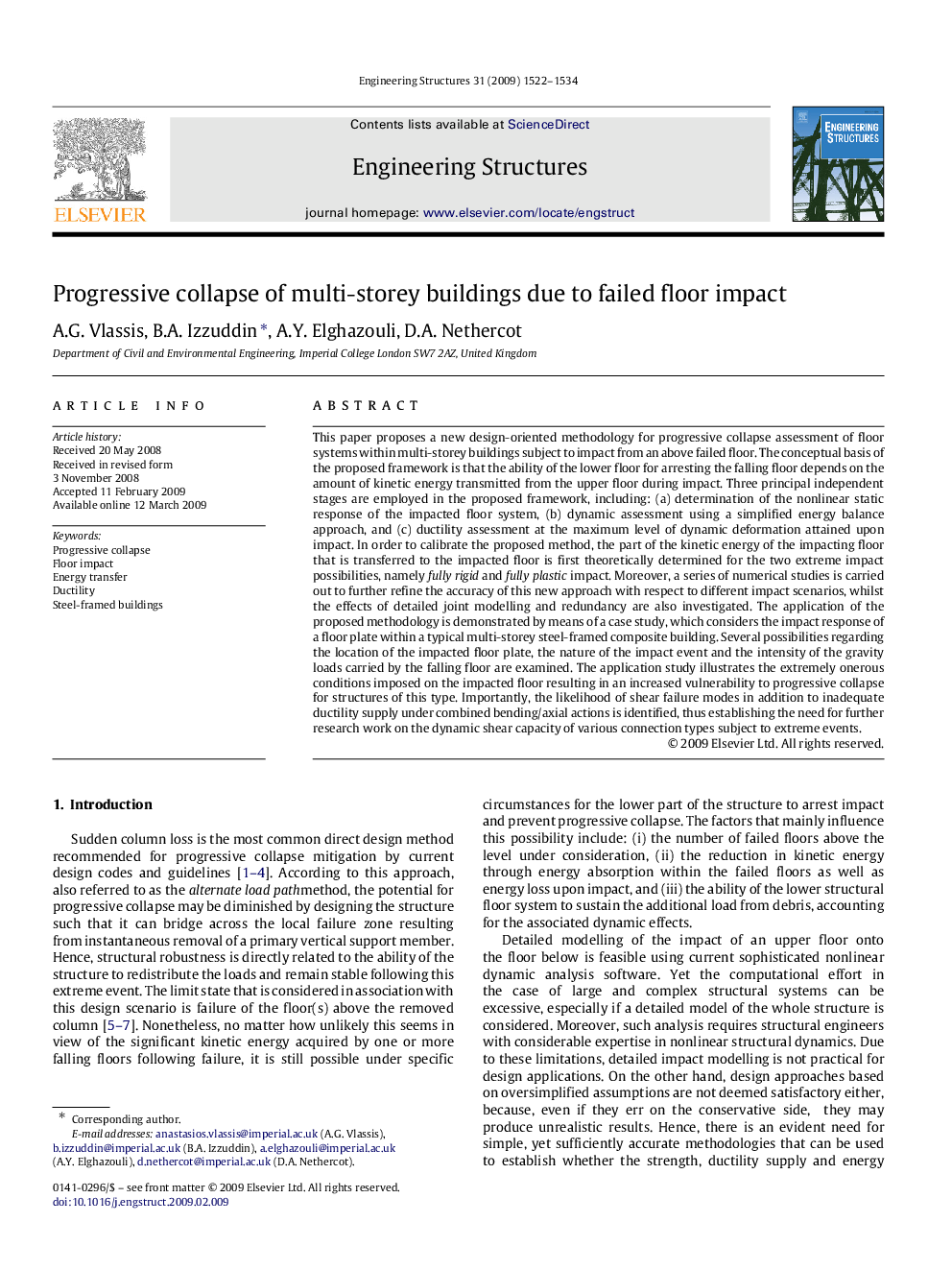| Article ID | Journal | Published Year | Pages | File Type |
|---|---|---|---|---|
| 268541 | Engineering Structures | 2009 | 13 Pages |
This paper proposes a new design-oriented methodology for progressive collapse assessment of floor systems within multi-storey buildings subject to impact from an above failed floor. The conceptual basis of the proposed framework is that the ability of the lower floor for arresting the falling floor depends on the amount of kinetic energy transmitted from the upper floor during impact. Three principal independent stages are employed in the proposed framework, including: (a) determination of the nonlinear static response of the impacted floor system, (b) dynamic assessment using a simplified energy balance approach, and (c) ductility assessment at the maximum level of dynamic deformation attained upon impact. In order to calibrate the proposed method, the part of the kinetic energy of the impacting floor that is transferred to the impacted floor is first theoretically determined for the two extreme impact possibilities, namely fully rigid and fully plastic impact. Moreover, a series of numerical studies is carried out to further refine the accuracy of this new approach with respect to different impact scenarios, whilst the effects of detailed joint modelling and redundancy are also investigated. The application of the proposed methodology is demonstrated by means of a case study, which considers the impact response of a floor plate within a typical multi-storey steel-framed composite building. Several possibilities regarding the location of the impacted floor plate, the nature of the impact event and the intensity of the gravity loads carried by the falling floor are examined. The application study illustrates the extremely onerous conditions imposed on the impacted floor resulting in an increased vulnerability to progressive collapse for structures of this type. Importantly, the likelihood of shear failure modes in addition to inadequate ductility supply under combined bending/axial actions is identified, thus establishing the need for further research work on the dynamic shear capacity of various connection types subject to extreme events.
